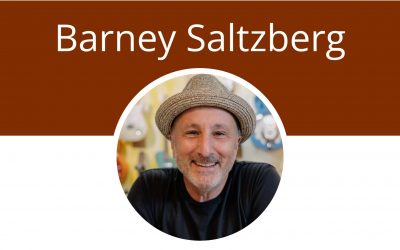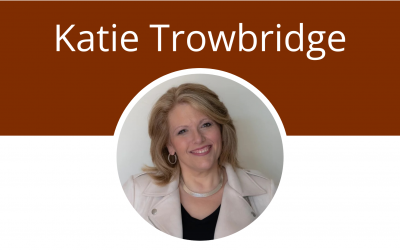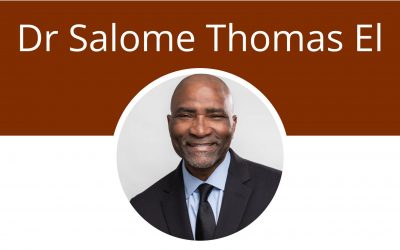Season 9 | Listen & Learn
Generating a Definition of Creativity
– Dr. Marta Ockuly
Episode Transcription
Listen and Learn: Generating a Definition of Creativity
Matthew Worwood:
Hello, everyone. My name is Dr. Matthew Worwood.
Cyndi Burnett:
And my name is Dr. Cindy Burnett.
Matthew Worwood:
This is the Fuelling Creativity in Education podcast.
Cyndi Burnett:
On this podcast, we’ll be talking about various creativity topics and how they relate to the field of education.
Matthew Worwood:
We’ll be talking with scholars, educators, and resident experts about their work, challenges they face, and exploring new perspectives of creativity.
Cyndi Burnett:
All with a goal to help fuel a more rich and informed discussion that provides teachers, administrators, and emerging scholars with the information they need to infuse creativity into teaching and learning.
Matthew Worwood:
So let’s begin. Hello and welcome to another episode of our winter 2025 listen and learn series. And as a reminder, these episodes are super short to support professional learning in education.
Cyndi Burnett:
Our goal in this series is to provide a quote from a creativity researcher or educator that we interviewed back in season one of the Feeling Creativity and Education podcast. And we would like to play this quote and then provide you with question questions to use with your professional learning community as a point of discussion. Now, if you don’t have a professional learning community, then come and join ours over at Curiosity2Connect and the link will be in the show notes.
Matthew Worwood:
Now, as a reminder, as part of this conversation, we do want to say that we are hoping to make some connections to our 10 actions for fueling creativity in education. Now, in our previous episode, Cindy had selected Susan Keller Mathers, who was our first ever episode of the Fueling Creativity in Education podcast. And so I figure that I’m going to go and follow up with our second episode, which was with Dr. Marta Oakley. Now, we bought Dr. Marta Oakley onto the show because she’s actually developed a new definition for creativity. It’s a big part of her work and what she continues to present upon. And one of the things that I really liked about this episode before I play the clip is the invitation for us to look a little bit about other ways to perceive creativity other than the scholarly definition.
Matthew Worwood:
So you’re going to hear a little bit about Martyr’s definition in the clip. And also, Cindy, I will say it, it is also a little timely. So a shout out for Marta, because this episode, I think, was recorded in 2021, and it’s particularly timely with generative AI. I won’t spoil it, so let’s listen.
Marta Oakley:
Well, I’m a qualitative researcher, and that means I focus on words and images. And my research is based on observation rather than statistical or numerical analysis. Okay, so heuristic is actually a synonym for empirical. True empirical research is based on observation of lived experiences, but it’s not framed that way by the American Psychological Association. So my research questions actually were related to my own experience. So the research questions were, what is my lived experience of creativity? So at the end of my 10 year process of researching how to define creativity in a way that encouraged and developed creativity in human beings, I came up with the definition that states creativity is the person centered process of imagining possibilities and taking embodied expressive action that makes your ideas real. What’s unique about that definition is it’s distinctly human. And it’s the first person centered universal definition of creativity.
Marta Oakley:
Researchers now in 2020 and 21 have determined all creativity begins with human creativity only. The important thing right now is humans have non human competition. In my research, I discovered that the field of human creativity was launched in 1950, but the field of computational creativity was launched in 1952. So for almost as many years both have been researched and both use the same definition. So computational creativity says non humans, robots, AI machines. Creativity is defined as novelty and usefulness and also in humans.
Matthew Worwood:
So, Cindy, I’m going to follow up on your lead from the first episode and model a way that we can facilitate a conversation around creativity. Now, I think this is relatively simple and one of our tips, of course, is having discussions. And when we kind of promote this idea of having discussions, we do think about what is creativity and what does it look like and sound like at your school. But what I’m going to do with you, Cindy, is I’m going to ask you to imagine that you can move away from the science of creativity and the scholarly definition of creativity. How might you define creativity within a school community when you don’t necessarily feel bound to that particular definition?
Cyndi Burnett:
Well, it’s a great question, Matt. And actually I worked on a definition around creativity many years ago, probably 10 years ago, on how I believed creativity should be taught. And it’s creative thinking. And I use creative thinking, which is different than creativity. For me, creative thinking is more than just coming up with new ideas. It’s about living life in a way that’s open, authentic and curious. It is a mindset and approach to everything we do. And so I think it is very similar to Marta’s definition that she developed.
Cyndi Burnett:
But I really believe in this piece of openness and curiosity and authenticity.
Matthew Worwood:
Well, and also living life to it. Right. So we can sometimes choose not to necessarily nurture our curiosity and explore our curiosity because of some of the constraints that maybe we spoke about on the past of the show. But I also want to point out, I mean, you know, it might be that some educators aren’t in a place to say, oh, here’s my definition. But I think ideally we should get to that place where when we’ve been in the classroom for a couple of years and we do want to facilitate creativity and is something that we greatly value. Coming back to what I said, what does it look like and sound like in the classroom? And I think you nurtured that is the fact that if we’re seeing if I’m in your classroom environment and you are abiding by your definition of creativity, then what I’m probably going to see is you getting curious about what the students are doing, perhaps getting curious about new material that you’re being exposed to within your practice. And you’re going to go and start asking questions, and those questions are going to lead you in new directions. And so you’re in essence living that creative life as you define it.
Matthew Worwood:
But likewise, we’re going to see that in the students and you facilitating experiences where they can continue to nurture their curiosity. So I think that’s a great example of how we can define creativity. And I will say that I have, you know, obviously I’ve thought a lot about this concept of teacher creativity. And you know, from Marta’s episode, I’ve gone away and really thought about what does teacher creativity mean? And for me, very similar. It is a way of being. And I think it’s in essence to keep it simple. It’s just a way. It’s a commitment to professional growth and making change in your learning environment and having faith and belief that you have the capacity, agency to make those changes.
Matthew Worwood:
And I think a commitment to doing that is how I see teacher creativity. And so what’s fascinating to a certain extent is, you know, the similarity with our definitions, but also slight differences. And I would also say that mine might swing a little bit more specific to a situation, a context, teachers professional growth, improving agency. I think yours, to a certain extent, is centered around that openness and curiosity piece, which maybe could initiate an effort to go and change a classroom environment. But it’s also something that can also just happen every single day, and it isn’t necessarily always deliberate. So these make fun conversations when you start defining creativity and, you know, it seems small, but when we interviewed Robert Sternberg, he referenced one of the intelligences as creative intelligence. But then he also said creativity is just about not conforming, not conforming to the crowd. So in essence, we saw Robert Sternberg provide a slightly different definition of creativity.
Matthew Worwood:
And likewise, we’ve had Jonathan Plucker on the show talk about the idea of creativity is just taking old stuff, mixing it together with other old stuff to make new stuff. And that’s this idea of repurposing as well. So I think there are a lot of fun opportunities to have around this conversation around creativity, and I think this particular episode is a great episode to do just that. So Cindy and I invite you, our listeners, to have a conversation with your colleagues and start off and say, what does creativity mean to you? And I think particularly what’s helpful in this is then once you start narrowing down on a definition, and you don’t necessarily have to have a definition, you will agree upon what are the similarities, where are the differences? And then the next stage might be what does it look like and sound like in your classroom environment? Do you want to bring more creative and critical thinking into your school? Look no further than our podcast sponsor, Curiosity to Create.
Cyndi Burnett:
Curiosity to Create is a nonprofit organization dedicated to engaging professional development for school districts and empowering educators through online courses and personal coaching.
Matthew Worwood:
And if you’re craving a community of creative educators who love new ideas, don’t miss out on their creative thinking network. Get access to monthly webinars, creative lesson plans, and a supportive community, all focused on fostering creativity in the classroom.
Cyndi Burnett:
To learn more, check out curiositytocreate.org or check out the links in the show notes for this episode. Matt, I think those are some great questions to start asking, and I think if you’re really sophisticated and want to build even more, you can start talking about computational creativity and how things like generative AI are defining creativity. Are they creative? And how are we as humans different? Because that’s one of the biggest pieces that Marta brought to that conversation.
Matthew Worwood:
Yes, excellent point. And I do want to do another shout out because this came in 2021. As I referenced before, generative AI came on the scene, so certainly a timely conversation. We will be linking to this episode in our show notes. And of course, this episode that we’re recording right now will be available on our website as well. My name is Dr. Matthew Worwood.
Cyndi Burnett:
And my name is Dr. Cindy Burnett. This episode was produced by Matthew Worwood and Cindy Burnett. Our podcast sponsor is Curiosity to Create, and our editor is Sam Atkinson.
Episode Highlights:
- Dr. Marta Ockluy’s human-centered definition of creativity: “Creativity is the person-centered process of imagining possibilities and taking embodied expressive action that makes your ideas real.”
- The role of openness, curiosity, and authenticity in creative thinking.
- How computational creativity challenges traditional views of human creativity.
- Actionable prompts to facilitate meaningful discussions about creativity in schools and professional learning communities (PLCs).
Key Discussion Questions for PLCs:
- How do you define creativity in your classroom or school community?
- What does creativity “look like” and “sound like” in your teaching environment?
- How can openness and curiosity foster creativity among students and educators?
- What role does computational creativity and generative AI play in reshaping our understanding of creativity?
- How do shared definitions of creativity help build a supportive and innovative school culture?
Resources Mentioned:
Downloadable Discussion Questions for PLCs
About the Guest
Her project interests range from on-site to remote programs for building creative confidence and competence, custom-designed creativity courses, and certification programs relating to the lived experience of human creativity, Awakening Creative Potential with J.O.Y., and “Actualizing Creative Potential for Personal and Professional Growth.” Dr. Ockuly’s research focus is the lived experience of human creative potential across the lifespan. She speaks and teaches internationally promoting imagination and embodied action as essential components of human creativity.
Her new definition has been adopted by United Nations sanctioned World Creativity & Innovation Day/Week celebrated globally April 15-21st.
Episode Debrief
Collection Episodes
Just a Banana and The Rabbit’s Feat: A Conversation with Children’s Book Author Barney Saltzberg
LISTEN & LEARN Just a Banana and The Rabbit’s Feat: A Conversation with Children's Book Author Barney Saltzberg“ And then I came up with an idea called Imagine Art. And it was finding art in cracks in the sidewalk, peeled paint, things like that. And when I was...
Deeper Thinking in the Classroom: A Conversation with Katie Trowbridge on Teaching Creativity
LISTEN & LEARN Deeper Thinking in the Classroom: A Conversation with Katie Trowbridge on Teaching Creativity “ the Deeper Thinking in the Classroom book is all about how to get students to three think in creative critical ways, how to get them to be connected. And...
Meet Their Needs, and They’ll Succeed: A Conversation with Principal El
LISTEN & LEARN SERIES Meet Their Needs, and They’ll Succeed: A Conversation with Principal ElAnd I said to myself, what if every child, every kid had someone like that, someone who was like a nurse that made them feel like nobody else mattered, you know, but them,...
Podcast Sponsor

We are thrilled to partner with Curiosity 2 Create as our sponsor, a company that shares our commitment to fostering creativity in education. Curiosity 2 Create empowers educators through professional development and community support, helping them integrate interactive, creative thinking approaches into their classrooms. By moving beyond traditional lecture-based methods, they help teachers create dynamic learning environments that enhance student engagement, improve academic performance, and support teacher retention. With a focus on collaborative learning and exploration, Curiosity 2 Create is transforming classrooms into spaces where students thrive through continuous engagement and growth.








